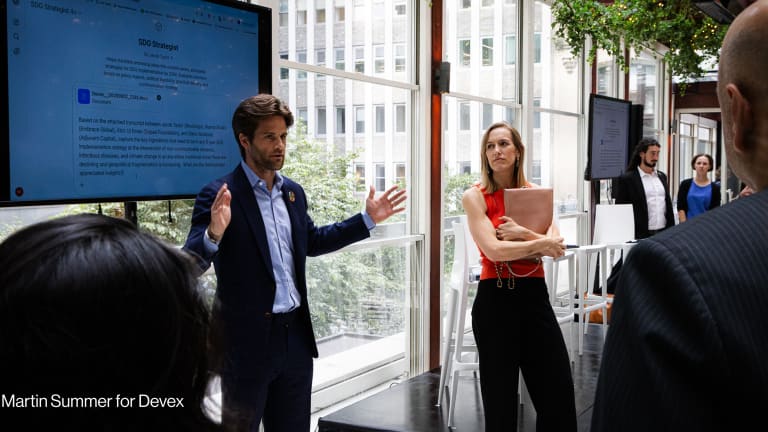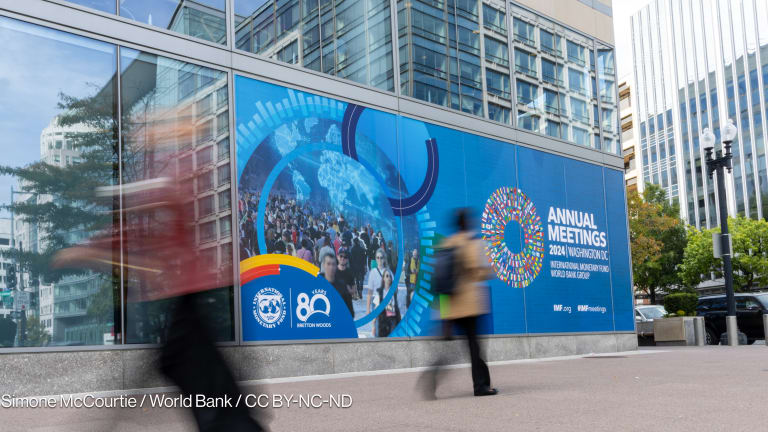
Do you remember Alan Kurdi? It would take a heart of stone to forget the devastating images of the 3-year-old Syrian boy’s lifeless body lying face down in the lapping waves of a Turkish beach.
It was a moment when the whole world seemed to care about the unfolding Syrian crisis and its brutal cost to millions of people. It provoked presidents to vent their outrage and a surge in public donations to humanitarian organizations. But this moment passed, consigning more children and their families to unbearable suffering. These moments are rare and fleeting.
It is said that a picture paints a thousand words. If that image were soldered on to the world’s retina perhaps there would have been no need for us to write our report, “Too important to fail: addressing the humanitarian financing gap.” With the world spending a record $25 billion a year on humanitarian aid, the world has never been so generous. And yet with a record 125 million people needing assistance, creating needs which are outpacing the available resources, never before has our generosity been so insufficient.
A victory for humanity
But this is a problem that can be solved. We need a humanitarian financing system that more effectively addresses this slow-moving tsunami of human suffering and misery. The funds raised for humanitarian aid in 2014 amounted to just 0.031 percent of world gross domestic product. Closing a funding gap that we estimate at $15 billion between needs and resources shouldn’t be out of our reach and would be a victory for humanity at a time when one is much needed.
The world is richer than ever before but also more fragile and ill-equipped to cope with multiple shocks caused by financial crises, natural disasters and violent extremism: phenomena which are increasingly frequent, contemptuous of national boundaries, and exacerbated by rapid population growth. If current trends continue, by 2030 the cost of humanitarian assistance will have risen to $50 billion and 62 percent of the world’s poor could be living in fragile and conflict-affected countries.
The present unsustainable humanitarian model has overreached itself because of a wider systems failure, responsibility for which is shared between donors and the aid organizations who nevertheless perform miracles every day in dangerous places. Manifold flaws lie in a system based on retrospective and short-term funding for protracted crises, a lack of transparency, interagency competition for resources, a largely fictive “divide” between development and humanitarian activities, and a broad trust deficit fueled by a credibility and accountability gap.
Change our business model
Put at its crudest, more people — and businesses — would open their wallets along with their hearts if they had faith that their money would be spent wisely and efficiently to help those less fortunate than themselves. And more governments would join the premier donors’ ranks if they were given the recognition and ownership due to everyone.
We make no apologies for giving this bleak assessment because, having conducted thousands of conversations with workers from every facet of the humanitarian ecosystem (including the poor people receiving humanitarian aid), we know that we are reflecting a widely held opinion that change is overdue.
Truth be told, attempts to reform and improve are underway; models of good practice already exist, along with the will to make the tough decisions for the sake of the greater good. But, as in any complex system with so many vested interests, resistance to change is difficult to surmount.
A ‘grand bargain’
So we have placed the concept of a grand bargain at the heart of our recommendations to the United Nations Secretary-General Ban Ki-moon. This elevates the principle of collaborative efficiency between donors, who would not simply give more but give better, and the humanitarian organizations saving lives who would reciprocate with greater transparency and cost-consciousness.
The three main elements of a grand bargain are:
1. For aid organizations and donors to work more closely together towards more financial transparency, more support and funding tools to national first responders, to scale up the use of cash-based programming and more coordination in its delivery.
2. For donors to commit to more multiyear humanitarian funding, less earmarks to humanitarian aid organizations and more harmonised and simplified reporting requirements.
3. For aid organizations to commit to reducing duplication and management costs, periodic functional expenditure reviews, more joint and impartial needs assessments and a ‘participation revolution’ by listening more to and including affected people in decisions that involve them.
Our ambition is for this grand bargain between some of the leading humanitarian partners to be agreed by the first ever World Humanitarian Summit in Istanbul in May. If they set an example by jumping together then more will follow, because it is greater than the sum of its parts.
We believe that the political will is there to be tapped. Once set upon its course, momentum will gather in more governments and international organizations, the private sector and civil society — as well as the private individuals whose hearts were torn by the pictures of a Syrian toddler who should not have drowned.
Resilience in Action is an online conversation hosted by Devex, in partnership with the International Federation of Red Cross and Red Crescent Societies and the International Committee of the Red Cross, focusing on the practical realities of resilience building in the face of global challenges. Visit the campaign site to join the conversation using #ResilienceInAction.









